Let the bee free 02 "bee hybrid migration, bee crab mites follow, experts: should return to the native bee species, let the bees return to nature
0 sharing
In apiculture, there is also the myth that monks can recite sutras from afar. Bee farmers love queen bees with distant genes, and believe that this is the guarantee of many children, many grandchildren and more production.
To make matters worse, the artificial hybrid king triggered the spread of bee crab mites (Varroa destructor), causing headaches for bee farmers all over the world. Taiwan is no exception. According to statistics from 2016 to 2017, 90% of the reported cases of acute poisoning by honeybees have been found to control bee and crab mites, indicating that mite damage is widespread.

The pollen of bees is stored in grain (Photography / P. Fontana)
Bee hybrid migration, bee crab mites follow
Under the largest number of Western honeybees in the world, there are 31 subspecies, such as the Italian bee (Apis mellifera lingustica) commonly found in Taiwan, and the Sicilian bee (Apis mellifera siciliana) and the European black bee (Apis mellifera mellifera). Because subspecies can mate with each other, breeding king experts have allowed Europe, Africa, the Middle East, Central Asia and other subspecies to cross, and their offspring have flourished, and these high-yielding western bees have also begun to "colonize" Asia.
In 1960, the epidemic of bee crab mite was first reported by Western honeybees in Japan, which quickly spread to the former Soviet Union. It spread to Central and South America in the 1970s, and Italy reported the first case in 1981. European countries fell one after another, and the United States, New Zealand and Australia were not spared.
"Western bees conquered Asia and then passed it back to Europe, resulting in bee crab mites." Italian entomologist Paolo Fontana explained to the "upstream and downstream" reporter, while drawing the transmission path, "there were no bee and crab mites in Europe, but they already existed in Asia, so Apis Cerana slowly evolved a way to 'coexist' with uninvited guests, such as dividing bees frequently and abandoning the old nest occupied by bee and crab mites. In addition, the incubation period of oriental worker bees is relatively short, the bee crab mites parasitic on bee eggs do not have time to grow up, and the drones with longer incubation period suffer more seriously. "
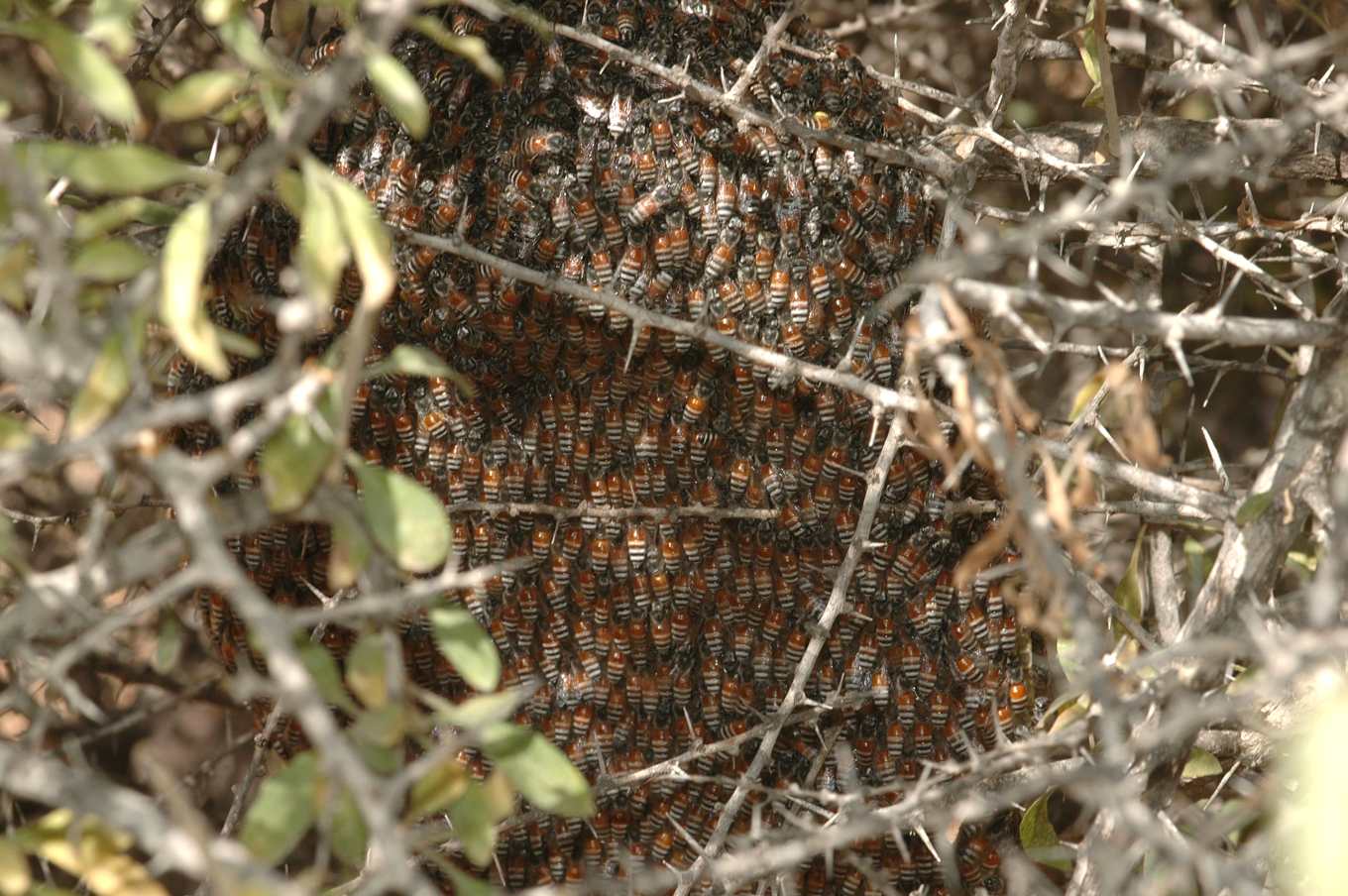
Honeybees in the United Arab Emirates (Photo / P. Fontana)
Bees should be cultivated on the ground, rather than leaving acaricides in the hive.
As the global apiculture industry is highly dependent on western bees, after the spread of bee crab mites, the work of beekeeping has become complicated and heavy, and mite killing has become a necessary skill. "the trouble is that chemically synthesized acaricides often remain in the hive." Fontana points out that many bee-related products are contaminated by bee farmers themselves.
Organic acaricidal techniques are becoming more and more mature, such as using sorrel oxalic acid to isolate the queen bee. But Fontana warns, "when fighting bee crab mites, it is important to restore the ability of bees to adapt to the environment." Don't ship thousands of Italian bees to Norway. They collect a lot of honey in summer, but none of them can survive the winter. What we need to do is to cultivate honeybees on the ground. For example, Taiwan should cultivate local bees that are suitable for Taiwan. "
Pesticides are a threat, and large-scale monoculture crops starve bees to death
Bees are weak and disappear, pollination of many crops becomes a problem, apples, peaches and cherries in the United States suffer, and farmers' incomes decline along with the fruit rate. Farmers turn to other pollinating insects, such as blue orchard bees (Osmia lignaria) and alfalfa leaf cutters (Megachile rotundata), who live alone.
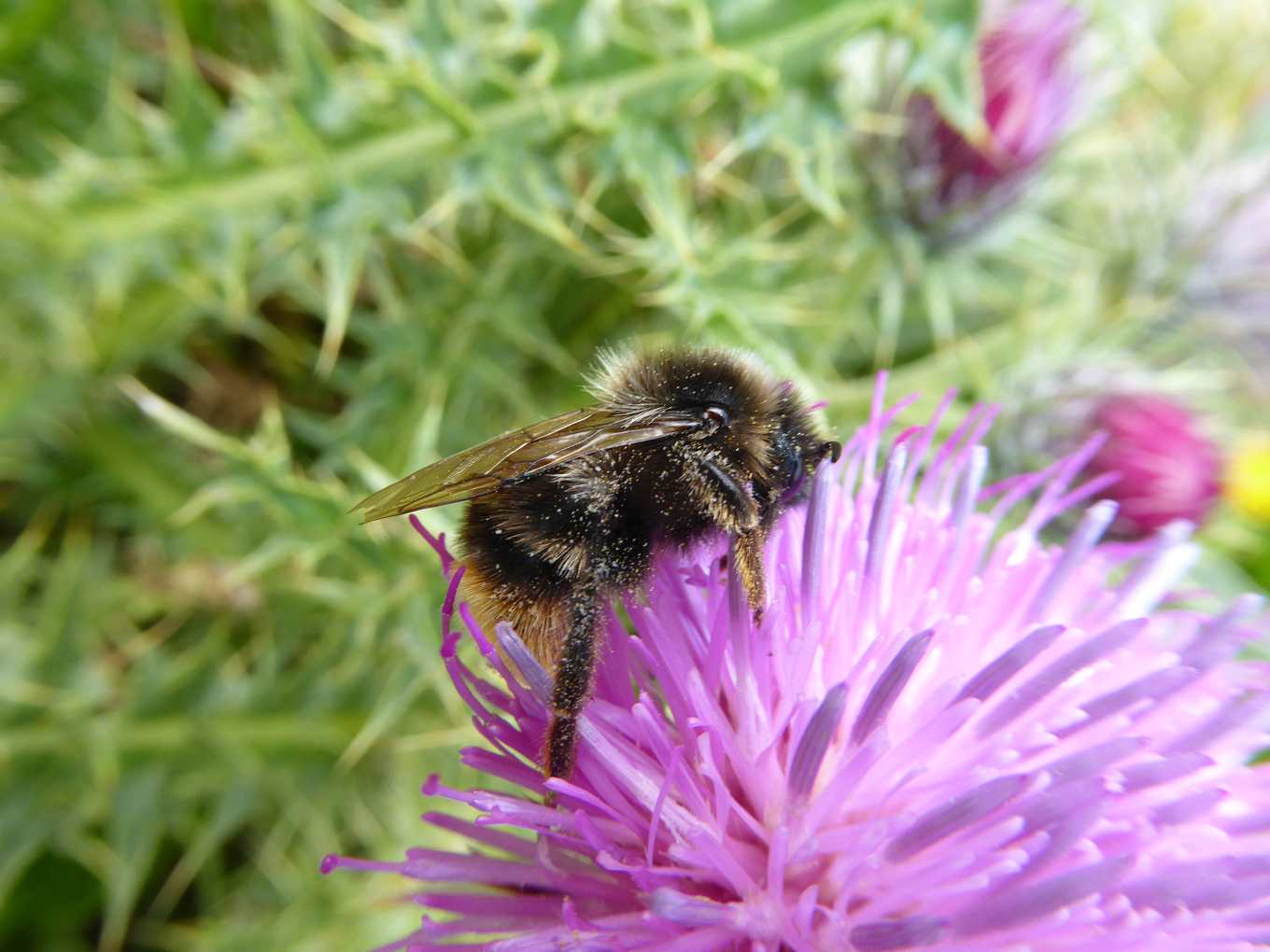
Bumblebee helps pollinate (Photography / P. Fontana)
Farmers rely on bees to ensure the harvest. "however, most of them use bees as production tools, like pesticides and fertilizers, to increase production." Care about bees only during flowering, and leave them behind after that, Fontana added, "now there are people pollinating with drones, and scientists are working on species suitable for drone pollination." For example, Walmart, a supermarket chain that needs a lot of fresh fruits and vegetables, has developed and patented pollination drones, as if "man triumphs over nature", and it doesn't matter without bees.
Some farmers are reduced to bee killers, such as the use of acute toxic fenpril or nicotine-like pesticides that cripple bees. Pesticides are indeed a hidden worry, but they are only symptoms, and the core focus is large-scale unitary planting. For example, in order to develop bioenergy, Germany and Nordic countries have planted large tracts of rapeseed fields.
"the fields of rapeseed and rapeseed are all rapeseed fields when bees fly for most of the day." Fontana said, "during the flowering season, they are not short of food, but then there are no other flowers to eat." Many times, bees starve to death. And with such a large area of planting, there are not so many bees pollinating in Europe at all. "
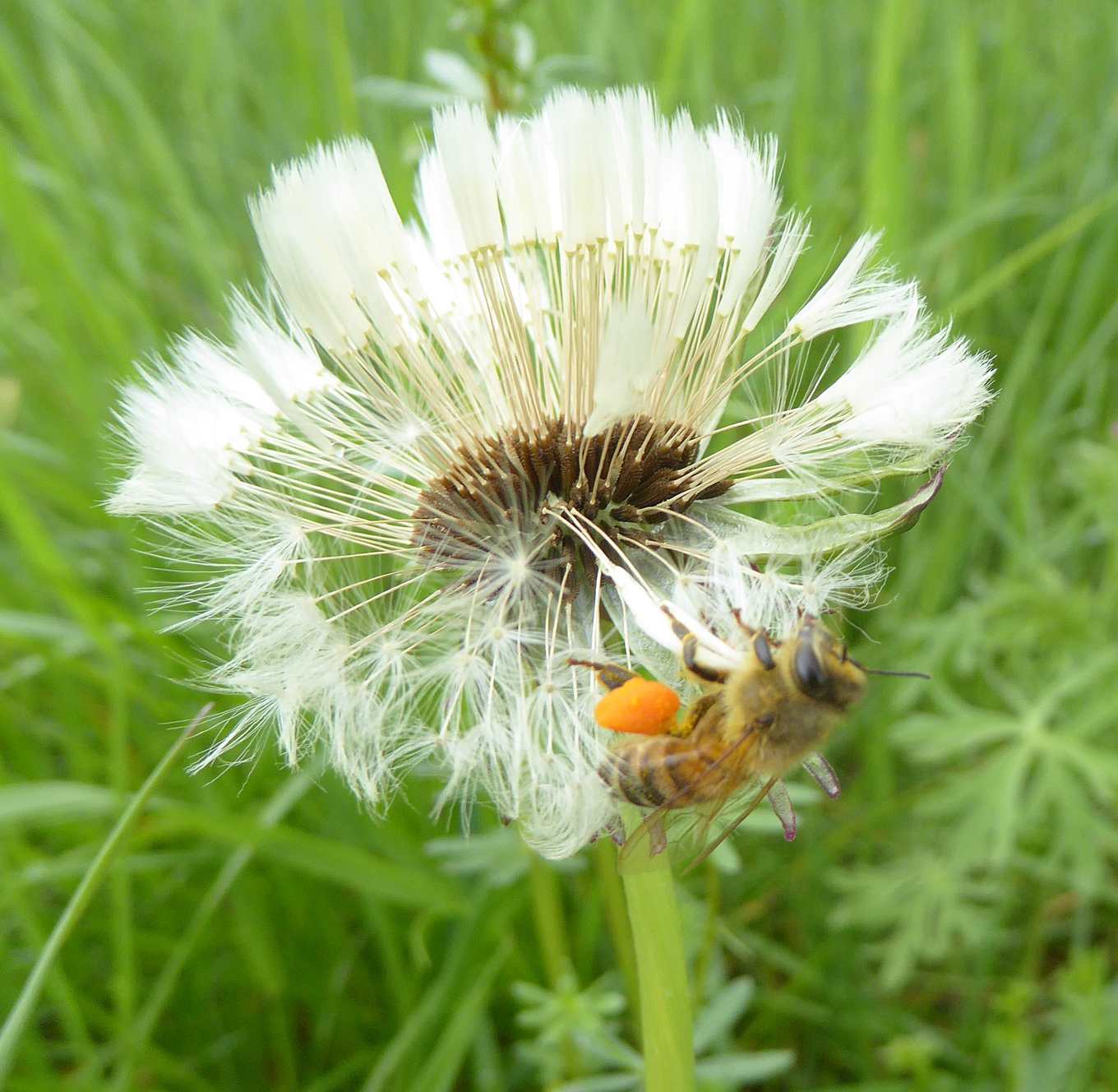
Bees are good at collecting pollen, with pollen baskets on their backs. (photo / P. Fontana)
Bees are the messengers of nature, and their survival depends on biodiversity.
Following the logic of single planting, bee farmers transfer their bees to nomadic pastures according to the flowering season of different crops, but Fontana points out that this is easy to spread diseases and insect pests, and long-distance nomadism also increases the risk of genetic pollution.
In addition, the importance of "ecotype" is ignored. They are also Italian bees, some live in forests 1500 meters above sea level, some in the plains and some by the sea, although they are of the same species but have different habits. For example, the florescence in the north is concentrated in spring and summer, while winter bees with few honey sources are the weakest; in contrast, in southern Sicily, it is extremely hot and dry in July and August, with no grass and no flowers, and the bees take advantage of the summer to recuperate.
Because of the different geographical environment, Italian bees have different life cycles, suddenly move over long distances, and are prone to maladjustment. "ecotype differences are not shown in genes, and they are difficult to observe from body size, so research is not easy, so they are often ignored," Fangtana said. "
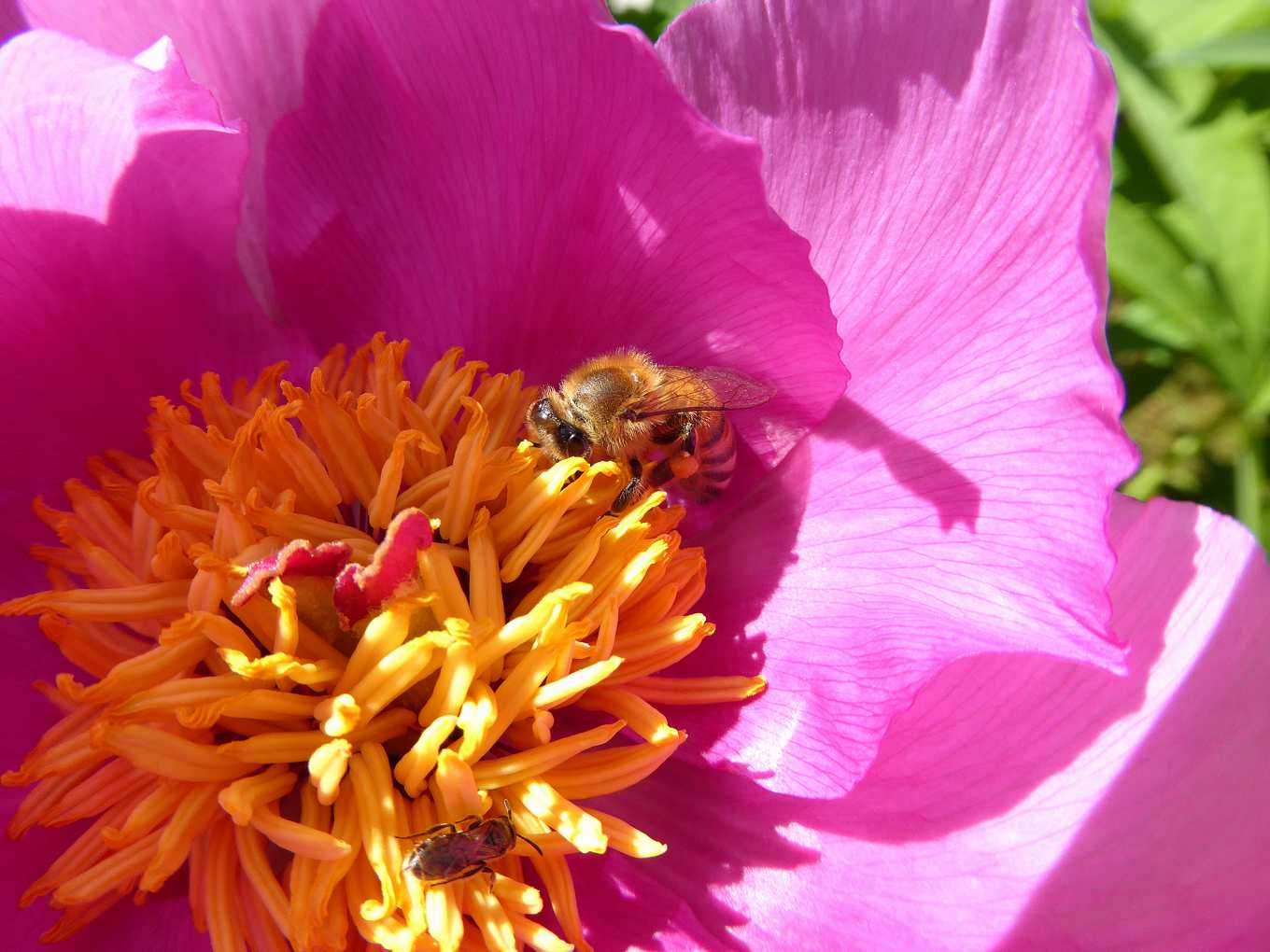
The ecotypes of honeybees are often ignored (photography / P. Fontana)
Let it bee, bring bees back to nature.
Bees have been working hard in recent years, and bee farmers have had a hard time. In addition to external factors such as diseases and insect pests, pesticide threats, single crop planting and climate change, Fontana believes that bee farmers should also reflect on themselves. "for example, in order to sell more honey, there is no honey left to the bees, and then only feed them sugar water, but sugar water does not have the nutritional value of honey at all."
The huge profits extracted from the meek western and Italian bees have fed many bee farmers, but it is clear that this path has reached a time of transformation. "it is certainly not easy to change habitual thinking. But open the depth of history and vision, you will find that in the long history, India, China's highly developed civilization, agricultural technology for a long time ahead of Europe, but there is no beekeeping industry in these two regions. China has known about sericulture for a long time, but there is no apiculture. " Fontana speculated, "it is very possible that the bee species in these two places cannot be domesticated, for example, oriental bees are easy to escape."
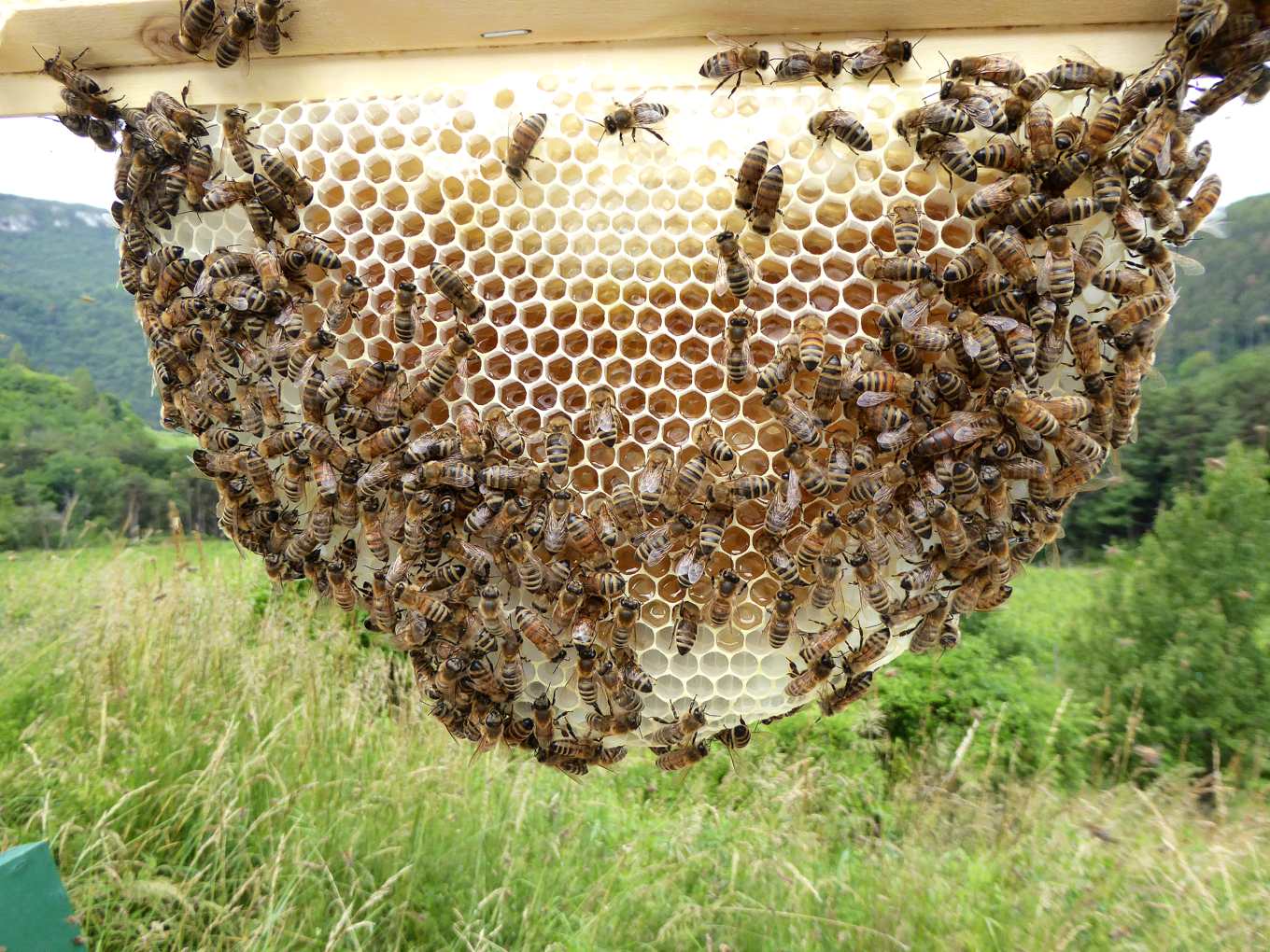
Meek western bees feed many bee farmers, but the time has come for transformation (Photography / P. Fontana)
Study the native bee species in Taiwan and explore the way of natural beekeeping
Today, Taiwan's apiculture, which raises a large number of western bees, is also in trouble. Fang Tana suggests that we should not copy Western experience blindly, but should study Taiwan's native bee species in a solid scientific way and explore different ways of keeping bees.
The lovely appearance of bees and the likable image of hard-working bees have been doomed over the years, and they are even more lovable. Bees come to the city from the countryside, promoting the "national bee tide" to save and protect bees. Fontana is sure that "urban beekeeping" makes urbanites have some connection with nature, otherwise urban children are afraid of bees or have never seen them at all.
But he likens it to keeping chickens as pets in the yard if you like, but these experiences cannot be inferred to an industry that treats chickens as economic animals. "the significance of education should not be confused with the value of production. Beekeeping is an industry, which should be reflected from the perspective of industry. "
In the final analysis, the problem with apiculture is that "the so-called 'modern' beekeeping technology has been around for about 150 years, and its defects are gradually exposed." "Bees are the messengers of nature, and crises have spread frequently over the years, telling us the importance of ecological diversity," Fontana said. Bees live in nature, and if their genes are to maintain biodiversity (biodiversity), the environment they live in and the food they depend on need biological diversity. "
Even if they are at the mercy of Western bees, they still yearn for mountains, forests and fields, and beekeeping still has to return to nature. Set the bees free, Let it be,Let it bee.

Let the bees return to the embrace of nature (photography / V. Latriglia)
Continue to read:
- Prev

Zhulinshan Temple Divine Pig Competition is so loving! Painted pigs, bread pigs to environmentally friendly pigs, believers: the important thing is worship.
Zhulinshan Temple Divine Pig Competition is so loving! Painted pigs, bread pigs to environmentally friendly pigs, believers: the important thing is worship.
- Next

Let Bee Freedom 01 "Human beings mistakenly pretend to be God, get involved in queen bee breeding, and the genes of western bees are narrowed, and one generation is not as good as one generation."
Let Bee Freedom 01 "Human beings mistakenly pretend to be God, get involved in queen bee breeding, and the genes of western bees are narrowed, and one generation is not as good as one generation."
Related
- A course of planting techniques and methods on how to grow carrots
- How to plant the latest tulips?
- Is it better to pick tea in the morning or in the afternoon? When is the best time for tea to be picked? what is the third or fifth tea?
- Launch Yuanxiao Happy combination Haocha + Tea Yuan healthy Taste
- Penghu Tourism "Fireworks 20 Parade with You"
- 2022 West Lake Happiness holds "Digital Revitalization Voucher" and draws iphone13 and laptop.
- Banqiao Fuzhou social houses are designed to change start-up combined with police elimination to create a safe and livable environment
- The convenient measure of "mechanical weeding" in Xinbei has been abused and the Agriculture Bureau has imposed heavy penalties on the illegal land consolidation.
- Changgeng University Joins Hands with Four Memory Factories to Rescue Memory Talent Shortage
- The list of Taiwan's top 100 MVP managers is listed by the Director-General of the Farmers' Association of Sanxia District.

